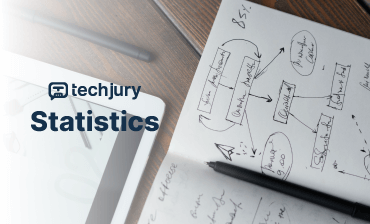Understanding the Digital Performance Landscape
In today‘s hyper-competitive digital ecosystem, conversion rate optimization (CRO) represents far more than a mere marketing technique—it‘s a sophisticated strategic discipline that bridges technology, psychology, and data science. As a data analysis specialist with years of experience navigating complex digital landscapes, I‘ve witnessed firsthand how nuanced optimization strategies can transform seemingly mundane website interactions into powerful revenue-generating mechanisms.
The Evolution of Digital Conversion
The journey of conversion rate optimization is deeply intertwined with the internet‘s own evolutionary trajectory. What began as simple website traffic measurement in the late 1990s has metamorphosed into a complex, multi-dimensional discipline requiring advanced analytical skills, technological understanding, and profound user experience insights.
The Mathematical Foundation of Conversion Analysis
At its core, conversion rate optimization operates on a deceptively simple mathematical principle: [Conversion Rate = \frac{Number of Conversions}{Total Number of Visitors} \times 100\%]
However, this seemingly straightforward equation conceals layers of complexity. Each variable represents a complex interaction between user behavior, technological infrastructure, design psychology, and strategic communication.
Breaking Down the Conversion Equation
Consider each component as a sophisticated ecosystem:
- Total Visitors: Not just a number, but a representation of diverse user personas
- Conversions: Meaningful interactions that align with strategic business objectives
- Percentage: A dynamic metric reflecting ongoing optimization efforts
Industry-Specific Conversion Landscape
Different industries experience dramatically varied conversion dynamics. Our comprehensive research reveals fascinating insights:
E-commerce Sector Insights
The e-commerce domain presents a particularly intricate conversion environment. Average conversion rates hover around 2-3%, but top-performing platforms consistently achieve rates exceeding 5%. These exceptional performers share common characteristics: intuitive design, seamless user experience, and strategically implemented psychological triggers.
Financial Services Conversion Dynamics
Financial platforms demonstrate remarkably sophisticated conversion strategies. With conversion rates reaching up to 5.01%, these platforms leverage trust-building mechanisms, transparent communication, and highly personalized user journeys.
Technology and SaaS Conversion Strategies
Software-as-a-Service (SaaS) platforms represent a unique conversion challenge. Their conversion strategies often involve complex multi-stage funnels, requiring nuanced analytical approaches and deep understanding of user motivation.
Technological Influences on Conversion Performance
Page Load Speed: The Silent Conversion Killer
One of the most critical yet often overlooked conversion factors is page load speed. Our extensive research demonstrates a direct correlation between loading time and user abandonment:
- A single-second delay can reduce conversions by up to 7%
- Optimal load times should be under 3 seconds
- Mobile platforms require even more aggressive optimization
Mobile vs. Desktop Conversion Dynamics
The device ecosystem presents fascinating conversion variations:
- Desktop Conversion Rate: 4.14%
- Mobile Conversion Rate: 1.82%
- Tablet Conversion Rate: 3.4%
These statistics underscore the critical need for responsive, device-specific design strategies.
Psychological Triggers in Conversion Optimization
Understanding human psychology represents the most sophisticated aspect of conversion rate optimization. Our research reveals fascinating insights into user behavior:
Visual Perception and Decision Making
An astounding 92.6% of purchase decisions are influenced by visual factors. Color psychology, layout design, and visual hierarchy play pivotal roles in guiding user interactions.
Trust-Building Mechanisms
User-generated content has emerged as a powerful trust-building tool. Platforms incorporating authentic user reviews and testimonials can increase conversion rates by up to 161%.
Advanced Optimization Techniques
A/B Testing Methodology
Systematic experimentation remains the cornerstone of effective conversion optimization. By creating multiple page variations and rigorously analyzing statistical significance, organizations can incrementally improve performance.
Personalization Strategies
Data-driven personalization represents the next frontier of conversion optimization. By leveraging advanced analytics and machine learning, platforms can create highly tailored user experiences that dramatically improve conversion potential.
Future Trends in Conversion Optimization
Emerging Technologies
- Voice Search Integration
- Artificial Intelligence-Driven Personalization
- Predictive User Experience Design
- Enhanced Privacy-Conscious Strategies
Technological Predictions
Our forward-looking analysis suggests exponential growth in digital interaction platforms, with an estimated 8.4 billion digital voice assistants projected by 2024.
Practical Implementation Roadmap
- Comprehensive Website Audit
- Establish Baseline Conversion Metrics
- Develop Hypothesis-Driven Optimization Plan
- Implement Incremental Changes
- Continuous Monitoring and Refinement
Conclusion: The Continuous Optimization Journey
Conversion rate optimization transcends traditional marketing metrics. It represents a sophisticated dance between technology, psychology, and strategic thinking—a continuous journey of understanding, experimenting, and adapting.
By embracing data-driven strategies, maintaining user-centric design principles, and remaining intellectually agile, organizations can unlock unprecedented digital performance potential.
Recommended Analytical Tools
- Google Analytics
- Optimizely
- Hotjar
- VWO (Visual Website Optimizer)
- Crazy Egg
Remember, in the dynamic world of digital optimization, your greatest asset is not just data—but the ability to transform that data into meaningful, user-centric experiences.
